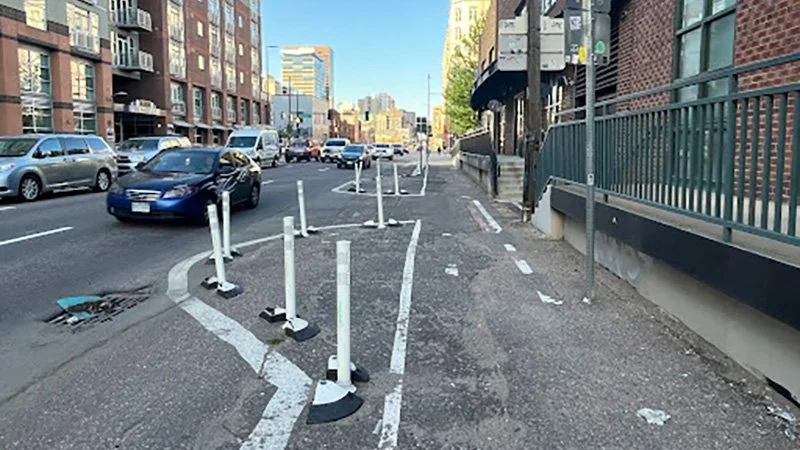In recent years, Strong Towns ideas have started permeating the wider culture at an increasing rate. But even as many cities and organizations embrace the movement and create real, positive change, others twist it to serve their own agendas. Now more than ever, advocates must uphold the true principles that build strong towns.
Read MoreThe Strong Towns movement is steadily progressing to the next phase of its mission. A substantial number of people are convinced of the principles behind the movement, and they want to roll up their sleeves and get to work. Here’s how to make the leap from building awareness to actually changing the default of North America’s built environment.
Read MoreBeing a member of the Strong Towns movement isn’t just about increasing your knowledge of city planning and what your town can do better. It’s also about allowing that knowledge to affect your own behavior. No change is cheaper than behaving in a way that helps everyone get home safely
Read MoreIt’s Member Drive Week here at Strong Towns. To celebrate, Chuck’s reading some of his best articles that you might’ve missed. Today, he’s reading “The Cost of an Extra Foot,” which explains why engineers love overdesign and what that means for cities’ finances.
Read MoreSecret projects. Preventable pedestrian deaths. False promises of safety and support. This is what we — as a movement, as a nation, as a people — are up against. It’s time for a change.
Read MoreBeing an advocate for safer, more resilient cities means going up against big obstacles and decades of momentum. It can seem overwhelming, but change is already happening across North America. Here’s how local heroes are making their cities stronger.
Read MoreOnce a city acknowledges that it can’t afford maintain its infrastructure, it’ll change its investment pattern to be more resilient….right? Actually, many cities try to make more money magically appear so they can continue that pattern. Here’s why “How do we get more money?” is the wrong question and what cities should be asking, instead.
Read MoreWhen trying to make a walkable and vibrant street, urban planners often think in terms of hard infrastructure like road width and crosswalks. But soft infrastructure, specifically flowers and other colorful plant life, plays an important role as well.
Read MoreRecently, the city of Winnipeg, Canada, decided to ban on-street parking near a dangerous intersection, hoping that wider sight lines would reduce collisions. The process the city used to create this plan, as well as the discussion it triggered with the public, offers insights for advocates hoping to make their streets safer.
Read MoreChurches occupy an awkward spot in the parking debate. Their parking lots are necessary, but only a couple of times a week. Otherwise, the lots sit empty, wasting valuable land. How can churches and cities handle this problem? Here are three possibilities.
Read MoreEast Grand Avenue in St. Paul, Minnesota, manages to maintain a unique and magical sense of place even while being car-centric. Here’s how it does it, and how other cities can design their built environments to capture that sense of place.
Read MoreMany cities try to improve their downtowns through master plans, hoping that grand projects will draw residents and customers into the city core. But this often fails because truly strong, attractive downtowns form through incremental development.
Read MoreIf you are a tourism marketer, how can you work to make your town more sustainable, resilient and attractive to visitors? And how do you do it in a way that balances the needs of the community? Here are a few ideas to get you started.
Read MoreNorth America is facing two widespread crises at the same time: housing and loneliness. This group is proving that cohousing might be the solution to both.
Read MoreWhen discussing redevelopment, street design isn’t what most people think of. Since North American streets are often built to completion, this kind of incremental approach seems alien. But it’s exactly what cities need to improve their economic, social and environmental conditions.
Read MoreCar-sharing gives people the perks of a private vehicle without the hassles of owning one, but that's just the tip of the iceberg. Here's how urbanists can use this car-rental model to strengthen their communities.
Read MoreWhen fighting the housing crisis, you need to get creative. Toronto is doing just that. Not only have they created a partnership between public officials and private developers, but they’ve also identified a valuable urban resource that often flies under the development radar: transit property.
Read MoreNo city is an island, and no city can judge its place in the housing crisis based solely on local demand. They must also consider how their restrictive policies may be driving housing demand to other places — or how other cities may be driving demand to them.
Read MoreBuilding affordable housing seems like a win for cities struggling in the Housing Trap. But between its top-down nature and the public subsidies it requires, affordable housing can actually make things worse.
Read MoreThey say insanity is doing the same thing over and over again and expecting different results. Oregon policymakers seem to disagree, as they plan to pour $30 million of taxpayer money into reviving container shipping services at the Port of Portland…even though it’s been a consistent economic failure.
Read More



















